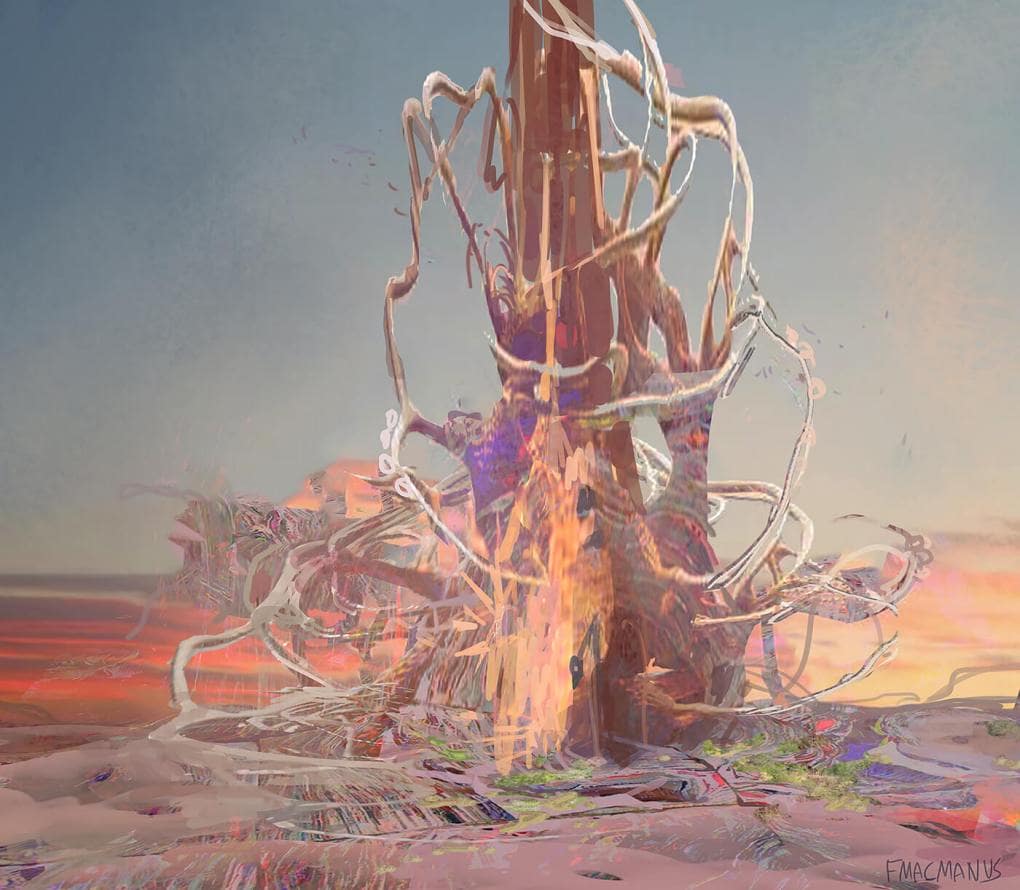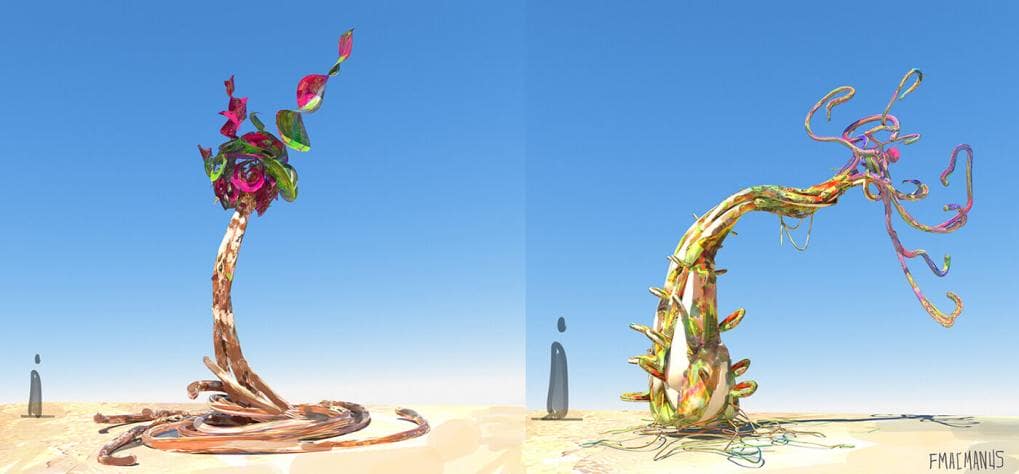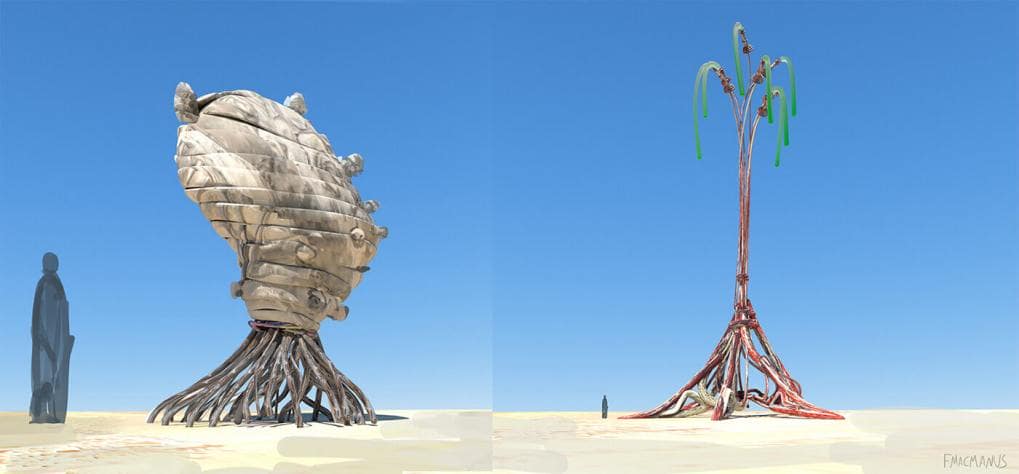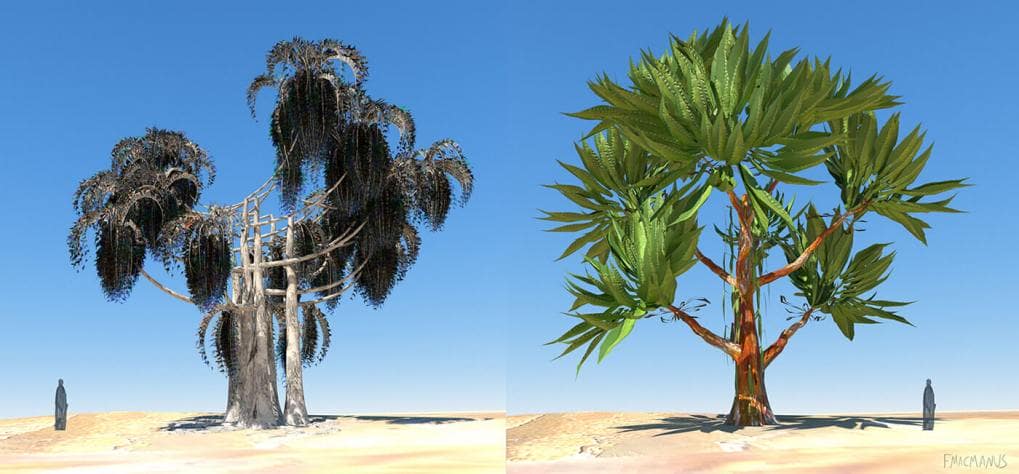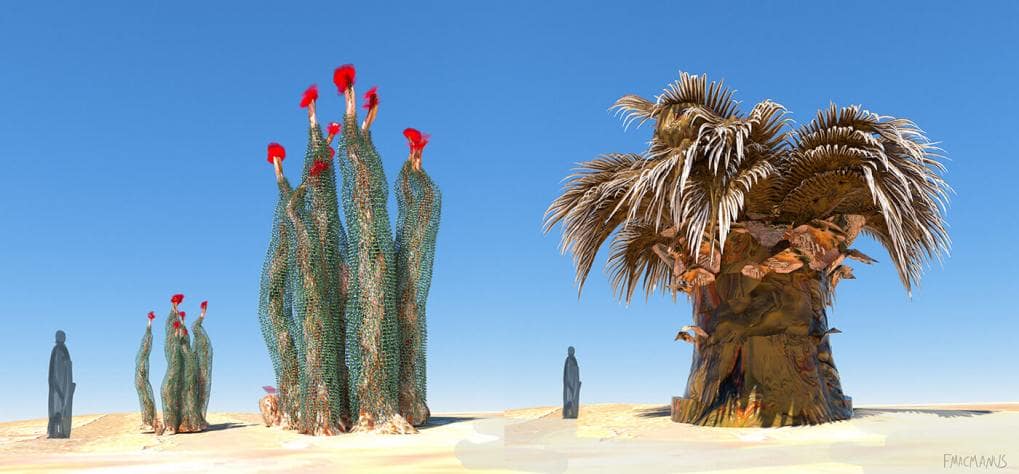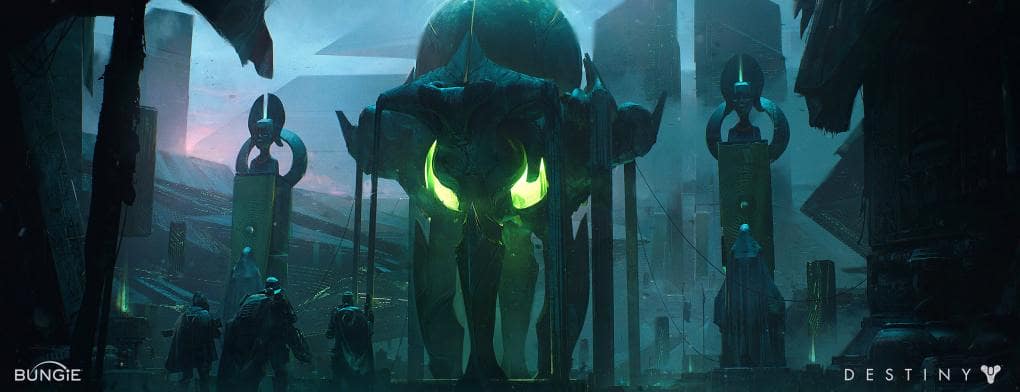New Worlds and Familiar Franchises
Concept artist and studio-runner Finnian MacManus creates sweeping landscapes and other-worldly environments for Marvel, Disney, Industrial Light & Magic, EA Games, Apple, Sony, and Microsoft. In his spare time, Finnian crafts new worlds like “Khedemar” to hone his skills and flex his imagination. Read our interview below to learn how he approaches new concepts, uses SpeedTree in alien contexts, and runs his studio.
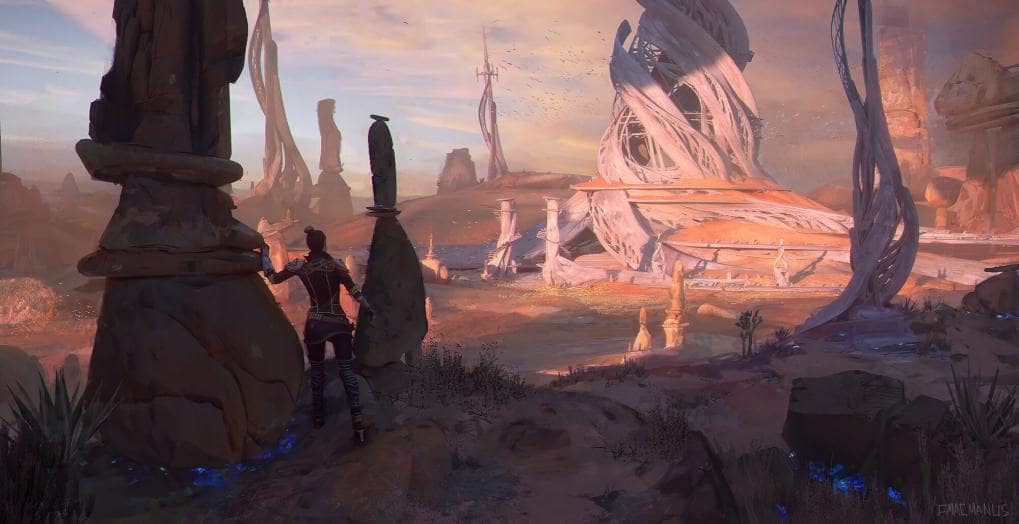
Get to Know Finnian
Katly Hong (KH): Please introduce yourself to our readers.
Finnian MacManus (FM): I currently work as a creative director and concept artist in the entertainment Industry. I grew up in Chicago with a passion to follow my dreams and create art for games and film. When I was 18, I moved to Los Angeles to attend ArtCenter College of Design. After a few terms, I ended up dropping out because of a job opportunity at Sony Santa Monica—I never finished my degree and started working directly as a concept artist on God of War 4 instead. From then on, I’ve had the pleasure to work with many of my dream studios and on lots of projects and IPs that inspired me to get into the industry.
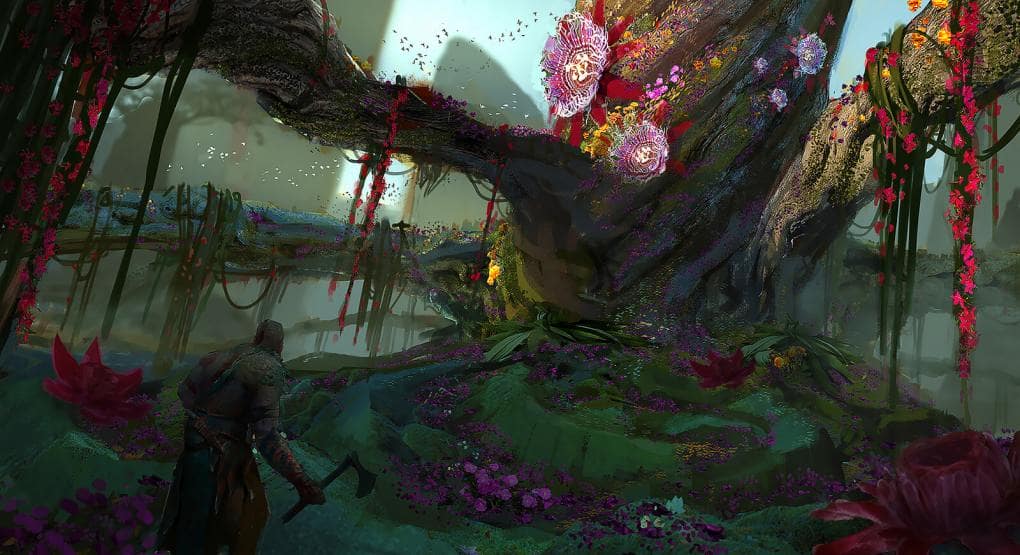
Finnian’s “God of War Forest Highvis”
Some of my favorite projects I’ve been a part of are James Cameron’s Avatar sequels and working with Industrial Light & Magic on Star Wars: Rogue One. Nowadays, I work mainly as a creative director for my own studio where I art direct projects and occasionally do concept work as well. I manage all of our artists, provide the creative support that each project needs, and make sure that we exceed all of our clients’ design goals! It’s been an absolute blessing being able to continue to work on some fantastic projects while being surrounded by my friends from the industry at the same time.
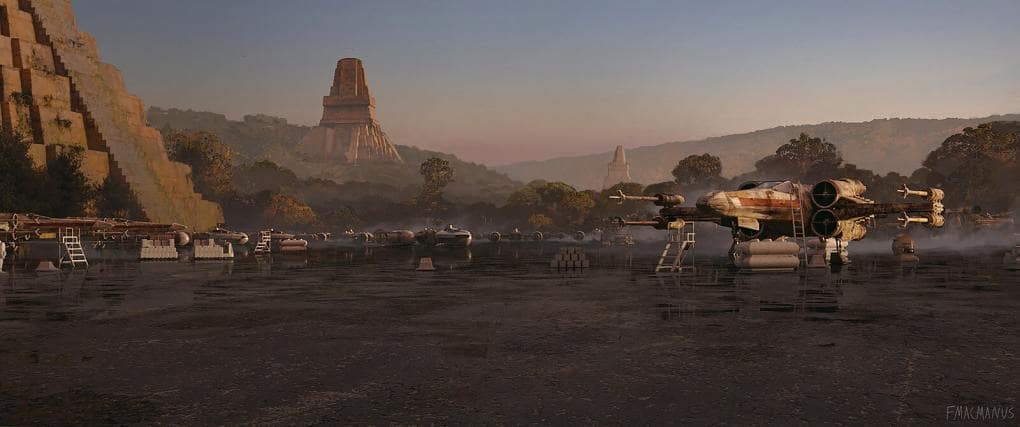
Finnian’s “Rogue One Production Work”
KH: What drew you to the industry? Was concept art something you knew you wanted to focus on or did you discover that over time?
FM: My first insight into concept art was back when I was a sophomore in high school, in 2010, and my father gave me a book by John Berkey, an incredible spaceship painter and designer. Then, after researching the first Avatar film and understanding how the film was made, I learned more about how you can make a living creating science fiction and fantasy designs for films and games. Since that was what I did in my spare time, it seemed like the only job I could be satisfied with!
Now, I have other interests that surpass concept art, but back then it was my sole focus, and I spent the next five years immersing myself in as much knowledge as I could find on the subject. I made sure to contact tons of people in the industry asking for their advice and eventually found a few mentors who helped guide me onto the right path.
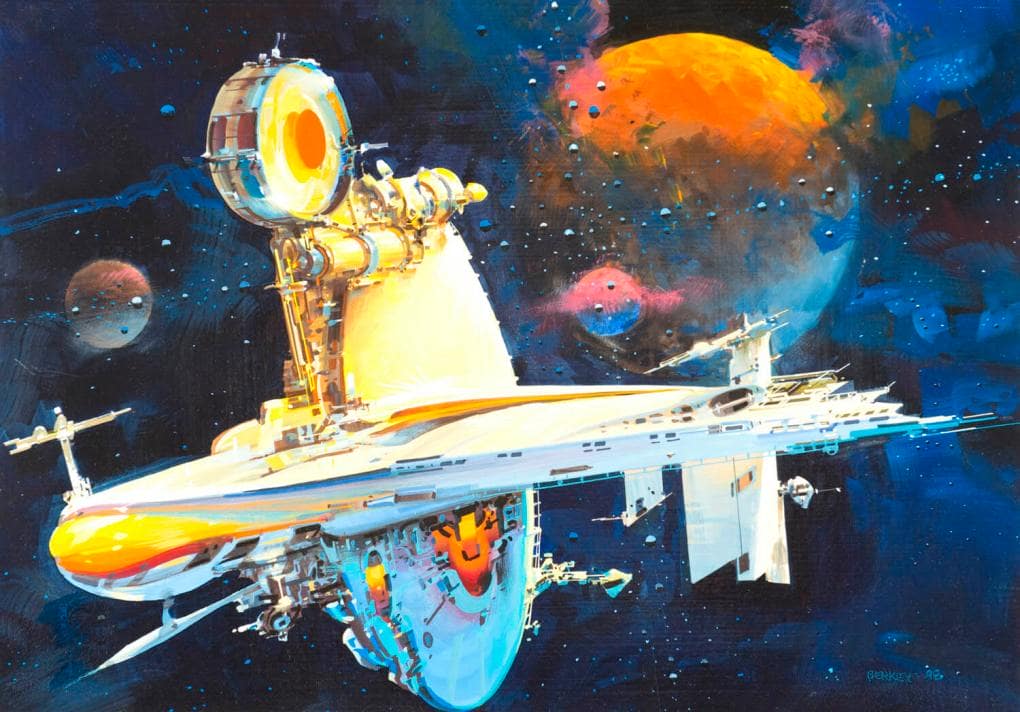
John Berkey’s “Defending Rose”
Creating “Khedemar” and Using SpeedTree
KH: Could you break down your process on the concept art for, “Khedemar”? While vegetation modeling is our primary focus, we’re also interested in your approach to concept art as a seasoned professional!
FM: I would be happy to talk about “Khedemar”! This is a project that is more personal to me: it’s a world or ‘realm’ I developed in my spare time. Whenever I concept something for my personal work, I spend most of my time focusing on the idea behind the scene rather than spending a ton of time rendering; my favorite aspects of design lie within the initial concept, the first read or the thinking behind it all. For “Khedemar,” I produced a ton of smaller studies, both in 2D and 3D/VR , that helped inform the direction I wanted for the space.
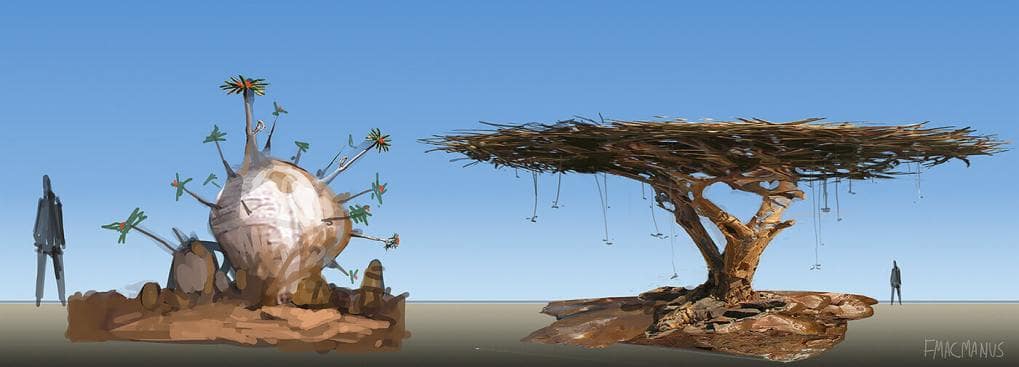
As I mention in the project descriptions, it’s a fictional land that is ruled by self proclaimed prophets who aim to transform the desert into a living paradise. They can sacrifice a part of their lifespan to mold and shape the desert into new forms and beings, and they often create representations of the Sun god they worship. I often create narratives like this behind my work as I’m designing it, not only because it’s fun but because the more thought that goes into something the more immersive it is for a viewer, even if that concept is not explained directly.
KH: How do you approach modeling in SpeedTree? Do you first sketch vegetation concepts and try to replicate them or is it more of an organic discovery process?
FM: When I work in SpeedTree, I think mainly about the scene and how I could design plant life that is interesting, unique, and can fit in without stealing attention. I also want the vegetation to be as immersive and believable as possible, which is one of the great things about SpeedTree: you have a ton of options to customize your design but with an organic shape hierarchy that exists in nature. This means that almost every design created in SpeedTree, no matter how ‘wacky’ or out of this world, will have a foundation grounded in reality. That is very important to believable fictional art, as there is a sweet spot where viewers are enthralled with something new, but they are not taken out of the image to question its plausibility.
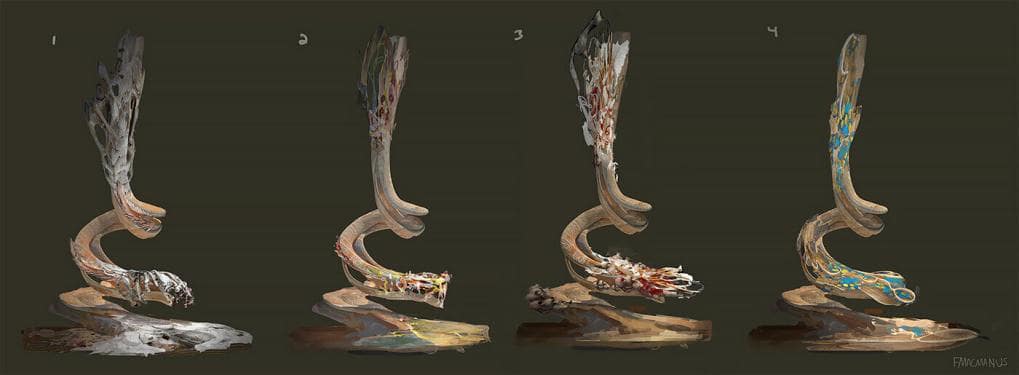
When I model in SpeedTree, I test out different hierarchies of shapes, different proportions, different leaves and base meshes to make sure I find parameters that are interesting and different. After I am happy with the base mesh, I will usually use a few different variations of the same plant and export them to Cinema 4D, where I create my own textures for the bark and vegetation.
Running a Studio and Sharing Wisdom
KH: You founded Terraform Studios in 2020. Did you and your team have any difficulty adapting to the circumstances of the past year?
FM: I founded Terraform right in the middle of the COVID-19 crisis, so I knew what we were signing up for! Thankfully, by the time I started the studio, we already had clients on board that wanted to work with us. I am a very methodical planner, and I never engage with an idea or business proposal unless I fully believe it will pan out. When we launched the studio, even though some film productions were getting halted, more were starting pre-production, and the games industry was booming. Because of that, I knew that we would be safe. What I didn’t expect was that we would actually grow so much! We started as a small team but have now expanded with several art directors and sub-teams. I always planned the studio to be remote, so we never had an issue regarding remote work; I want the artists to be able to work from wherever they want and to travel if they would like to as well!
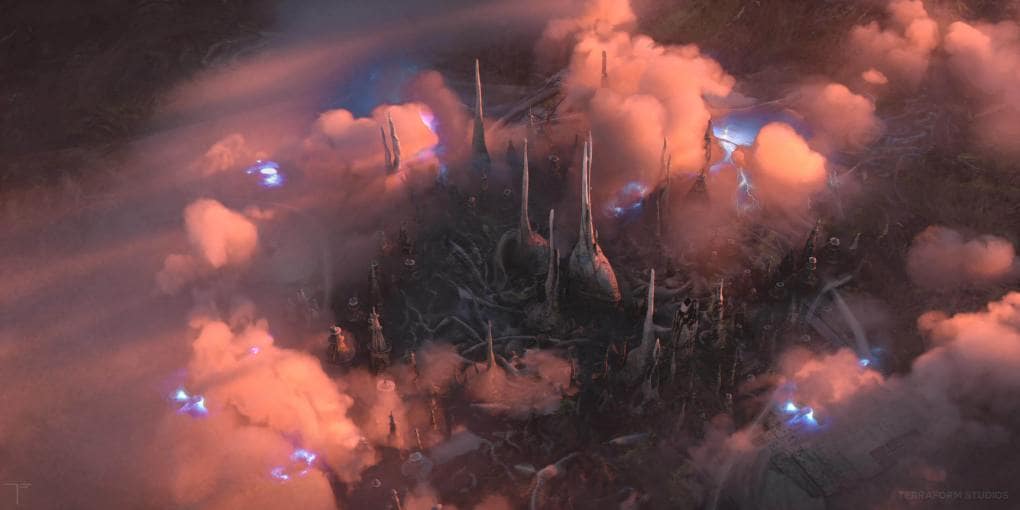
KH: What’s been the most challenging part of your work? What’s your favorite part?
FM: The most challenging part is the business side: understanding the best methods for expansion, product development, marketing, things like that. I absolutely love it, and I learn something new every day. I am the type of person who needs to constantly have a challenge to work through and this has helped a ton with that. Starting in a new field of expertise has opened up more options and I love growing as a designer and businessman. My favorite part is that all the artists on the team are happy with their work and projects. I want to make sure that anyone working at Terraform is loving their craft, creating amazing designs that they are proud of, and is truly passionate about the work they do. As much as I love the design process itself, I find that I am happier when I see others benefitting from the studio and our work.
Mark Kolobaev’s “Destiny 2” | Terraform STudios Portfolio
KH: What advice would you offer to aspiring concept artists?
FM: My advice would be to work as hard as you can! Never lose your passion! Create work that you love to do, not what others tell you to do. Realize it’s a very competitive industry that sometimes requires sacrifices. Help others around you and build a community that you can go to for advice. Treasure your friends and treat others with respect, be humble. Also know that there is more to life than concept art, and life experience is just as valuable as practicing perspective. To be unique in a sea of generic designers requires the study of much more than technical skill; it requires knowledge of art history, culture, architecture, and more. It’s important to leave the house and get out into the world to understand WHY we redesign reality and how we can become better designers.
KH: Thank you, Finnian!
Want to create realms of your own?
Start a free evaluation of SpeedTree Cinema and check out our library below!
Stay in touch with SpeedTree:

